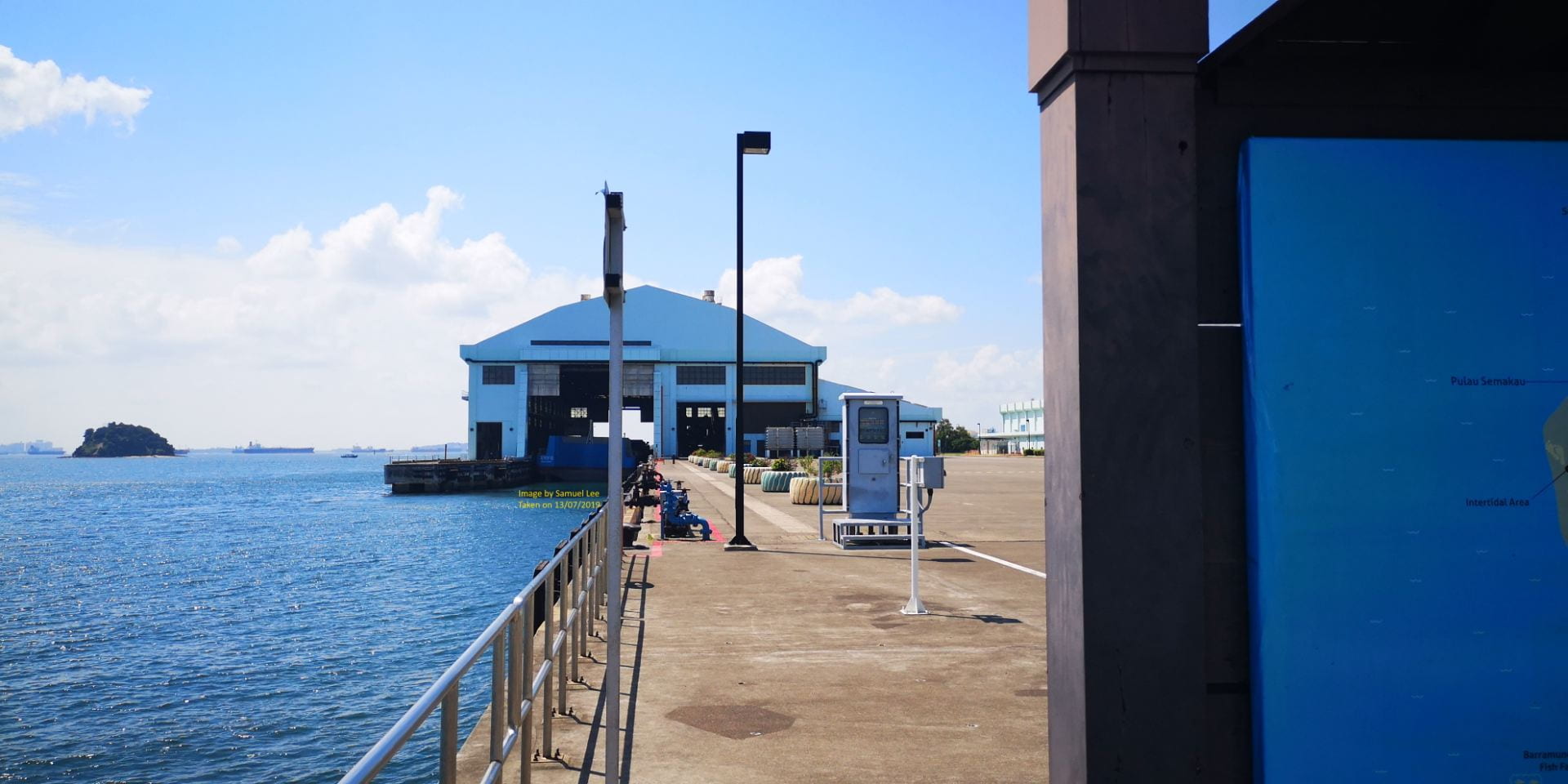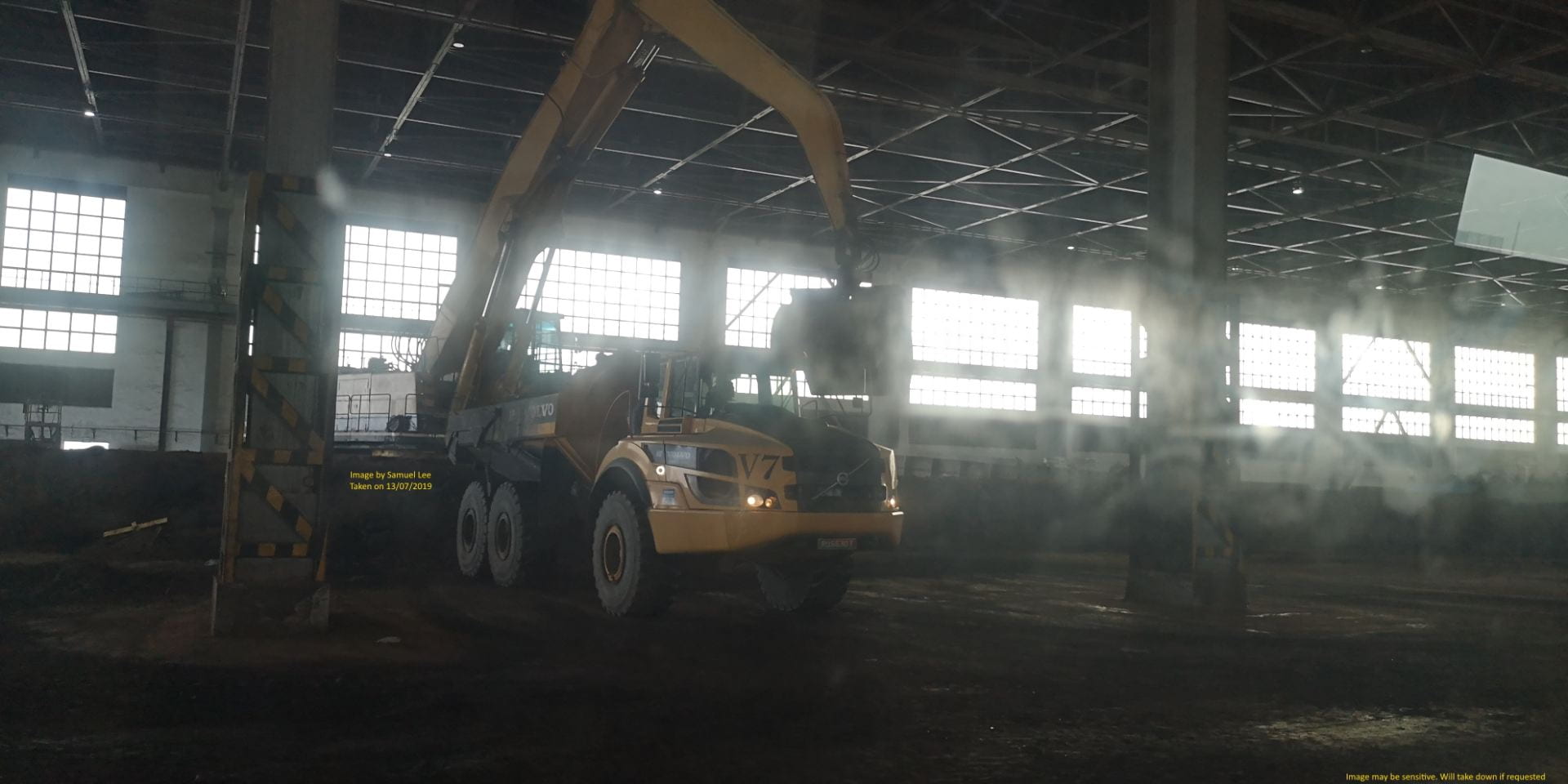So, you’ve finished your apple and are left with its core, and you do not have access to a composter; what would you do?
Throw it in the bin, I hope! From there, our trash ends up at one of four Waste-to-Energy incinerators, where the majority of its water content and bulk is reduced to bottom ash† (BA) to save space. This BA is then transferred together with sludge ash from PUB’s wastewater treatment plants (WWTP) (PUB, 2016) and Toxic Industrial Waste Collectors* by barge to Pulau Semakau, where it is dumped into the sea.

Bottom ash is transferred by barge to this transfer station
But wait, would that mean that hazardous substances from toxic industrial ash could perhaps leach into the sea? This could very well be the case. BA usually contains heavy metals(Lin, Wu, & Liu, 2007) and refractory halide-containing organic compounds, possibly from BOCs in WWTP sludge (Dung, Vassilieva, Swennen, & Cappuyns, 2018). Needless to say, these pollutants really should not be leaching into the sea due to their mutagenic or biocidal effects(Manaia et al., 2018; Tchounwou, Yedjou, Patlolla, & Sutton, 2012). Their persistence to biodegradation causes them to bio-accumulate and bio-magnify in apex predators and eventually us.
With these concerns in mind, I had the privilege of going to Pulau Semakau twice to find out how Singapore deals with the BA leachate issue. What I found clarified my woes, but raised other questions too.

Bottom ash is carried by these dump trucks to the floating bottom ash dumping platform
Now at Phase II of development, BA is being dumped into a large enclosed lagoon as seen below.

Map of Semakau landfill. Full credit goes to NEA for the map.
This lagoon is enclosed by granite bungs with a layer of impermeable material extending all the way to the sea bed, seen here.

Granite bung with an impermeable membrane at Phase II lagoon
As more ash is filled in, the lagoon’s water level rises, necessitating overflow discharge into the sea. This discharge is treated by a floating WWTP such that it meets the allowable limits for trade effluent discharge into a watercourse‡. The floating WWTP can be seen in the distance below.

Mockup of Phase II lagoon showing the floating dumping platform (longer) and the floating WWTP (shorter). Full credit goes to NEA for the mockup.
I also found an intriguing infographic on the technical specifications of the WWTP:

Infographic on the Semakau WWTP. Full credit to Memiontec Pte Ltd. and NEA for the infographic
We can conclude from these observations that direct exposure of BA leachate to seawater is entirely prevented.
However, a particular remark by one of our guides struck me: that at the bottom of the lagoon is the original seabed. This would mean that years after Phase II has been filled, the BA could become highly acidic after being repeatedly exposed to haze, polluted air from nearby Shell-owned Pulau Bukom, and bacteria from topsoil used to reforest the Phase II site(Li, Ohtsubo, Higashi, Yamaoka, & Morishita, 2007); thus resulting in heavy metals possibly leaching into the seabed and the surrounding sea.
Also, while the infographic does substantially more information than what is available online, much of it is redundant. Being in the public lobby, one could assume the infographic is meant for the public. Personally, a technology showcase and a detailed characterisation of the Phase II lagoon water chemistry would have been more appropriate. Of course, this data is sensitive; but I do find it a missed opportunity to build trust with the public about the competency of local treatment facilities.
Sadly, when I tried to get in contact with Memiontec for an interview on these queries, I did not get a reply.
References:
Dung, T., Vassilieva, E., Swennen, R., & Cappuyns, V. (2018). Release of Trace Elements from Bottom Ash from Hazardous Waste Incinerators. Recycling, 3(3), 36. https://doi.org/10.3390/recycling3030036
Li, L. Y., Ohtsubo, M., Higashi, T., Yamaoka, S., & Morishita, T. (2007). Leachability of municipal solid waste ashes in simulated landfill conditions. Waste Management. https://doi.org/10.1016/j.wasman.2006.04.014
Lin, C. F., Wu, C. H., & Liu, Y. C. (2007). Long-term leaching test of incinerator bottom ash: Evaluation of Cu partition. Waste Management. https://doi.org/10.1016/j.wasman.2006.07.004
Manaia, C. M., Rocha, J., Scaccia, N., Marano, R., Radu, E., Biancullo, F., … Nunes, O. C. (2018). Antibiotic resistance in wastewater treatment plants: Tackling the black box. Environment International. https://doi.org/10.1016/j.envint.2018.03.044
PUB (2016) Sludge Dewatering Used Water Treatment Process. Retrieved from: https://www.pub.gov.sg/usedwater/treatment/usedwatertreatmentprocess
Tchounwou, P. B., Yedjou, C. G., Patlolla, A. K., & Sutton, D. J. (2012). Heavy metal toxicity and the environment. EXS. https://doi.org/10.1007/978-3-7643-8340-4_6
Additional Notes
* I got this piece of information from my NEA mentors during my internship in 2019, as well as through queries to NSL Oilchem Tuas 2’s site directors on a field trip.
† Incineration results in Fly Ash and Filter Cake that ends up in the flue gas filters too, but these are sent for further treatment before disposal on Pulau Semakau, according to an NEA guide on a Tuas Incineration Plant tour.
‡ This refers to Annex H of SS593 Code of Practice for Pollution Control on Page 42-43
